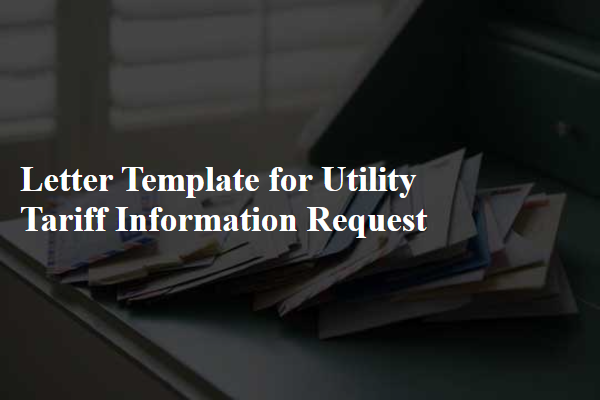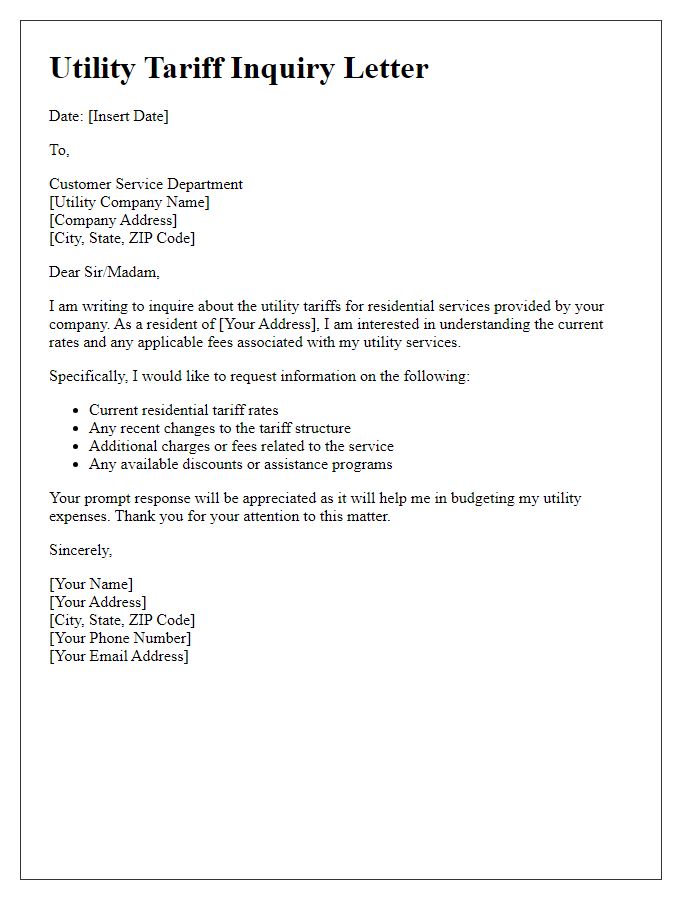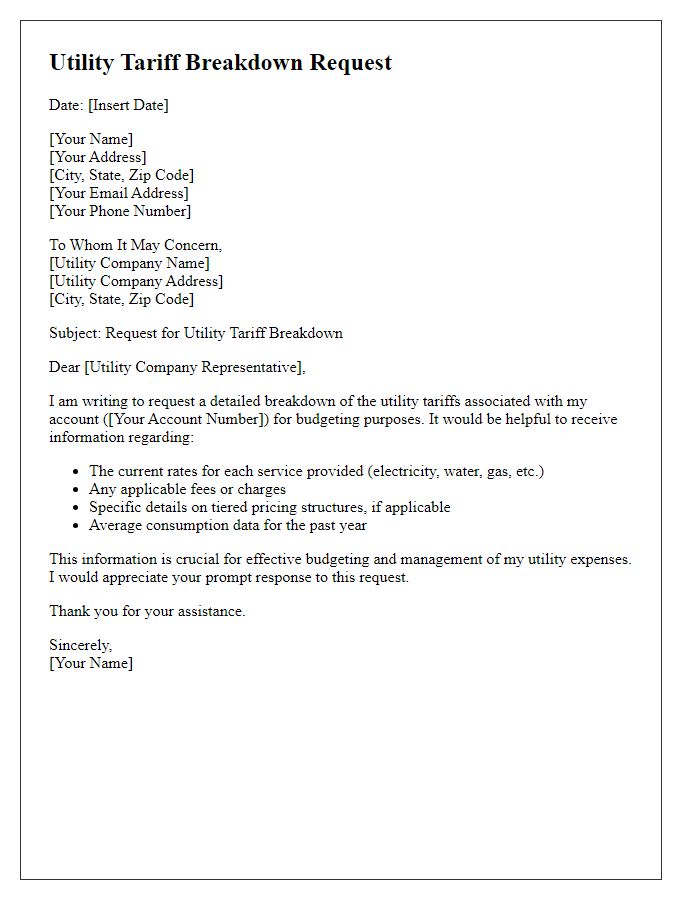Are you curious about how utility tariffs work and what you might be paying each month? Understanding your utility rates is crucial for effective budgeting and energy conservation. In this article, we'll guide you through the process of requesting utility tariff information, ensuring you have all the tools you need to navigate your bills with confidence. So, let's dive in and empower yourself with knowledge'read on to learn more!

Accurate contact information
Utility companies often receive requests for tariff information, which typically includes details related to pricing structures, fees, and other charges. When composing a request for such information, it is essential to provide accurate contact information, ensuring clarity and efficient communication. Including full names, addresses, phone numbers, and email addresses can facilitate quicker responses from utility representatives. Such requests may pertain to various services, like electricity, water, or natural gas, depending on the provider. Accurate contact information helps utility companies verify customer accounts and provide relevant details tailored to specific needs.
Clear subject line
Utility tariff information requests require clarity and precision. Individuals seeking details about pricing structures or rate changes, particularly in electricity, water, or natural gas services, should address their inquiries to the appropriate utility provider. Typically, utilities provide specific contact points for customer service or billing inquiries on their websites. Key aspects to include: specific account details, desired information regarding residential or commercial tariffs, and any recent changes in utility regulations or policies that may affect rates. Subscribers often benefit from understanding peak usage times, discounts, and available assistance programs. Proper categorization of the request enhances response efficiency.
Polite and concise language
Utility tariffs can significantly impact household expenses, particularly for services like electricity, water, and natural gas. Understanding these tariffs (the rates charged for utilities) is essential for budgeting purposes. It is advisable to check details regarding the tiered rate structures often used by various utility providers, whereby rates increase as consumption exceeds certain thresholds. Additionally, inquire about fixed fees (monthly charges not dependent on usage), seasonal fluctuations (rate changes based on time of year), and potential discounts for low-income households. Effective communication with utility companies, such as the Pacific Gas and Electric Company or Aqua America, is crucial for obtaining accurate and current information.
Specific tariff details request
Utility tariff structures vary significantly among regions, impacting consumers' electricity costs directly. For instance, peak demand rates in cities like New York can soar to 30 cents per kilowatt-hour during high-usage hours, while off-peak rates might drop to around 10 cents. Additionally, tiered pricing may influence residential customers in California, where the first tier covers usage up to 500 kWh at a lower rate, subsequently increasing for additional usage. Understanding these specifics is crucial for budgeting and energy management strategies. Overall, analyzing varied tariffs across different utility providers can equip consumers with essential information to make informed decisions.
Request for additional related information
Utility tariff structures determine the cost of services in jurisdictions like California or Texas. Understanding these tariffs involves exploring fixed charges, variable rates, and seasonal pricing, which collectively impact monthly expenditures. Additional information on billing cycles, usage patterns, and any discounts available for low-income households or energy-efficient practices can prove beneficial for consumers. Utility companies may also provide insights into regulatory changes affecting tariffs or upcoming public hearings addressing future service rates. Comprehensive knowledge of these aspects leads to informed decision-making regarding energy consumption and budgeting.
Letter Template For Utility Tariff Information Request Samples
Letter template of utility tariff information request for non-profit organizations.

Letter template of utility tariff clarification request for small businesses.

Letter template of utility tariff exploration request for renewable energy options.














Comments